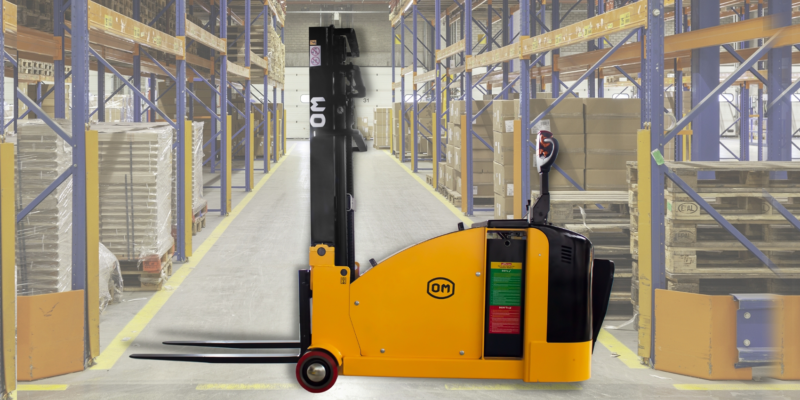Counterbalance stackers are essential material handling equipment for many industrial and warehouse operations. Counterbalance stackers are designed to lift, transport, and stack materials easily and efficiently. However, one must ensure that the Counterbalance stackers are in a way that maximizes efficiency while also minimizing risks and maintaining safety. Through this blog, we will explore the various ways in which we can achieve this balance.
Firstly, it is of utmost importance to ensure that the Counterbalance stackers are being used by professionals who are not only skilled but also highly trained and certified. To keep up with the constantly changing standards of operating Counterbalance stackers, many organizations have now started training initiatives to teach the operator’s the safety practices that are required to operate the stackers effectively and efficiently. The training also includes understanding how the machine works, what are its capabilities and limitations, understanding how to load and unload materials properly.
Proper training will also reduce the risk of accidents and increase productivity.
In addition to the operator training, it is important to maintain and inspect the counterbalance stacker, regularly. The maintenance and inspection checks for any signs of wear and tear, such as worn-out tires, loose bolts, repairs, and replacements wherever necessary. Regularly maintaining the counterbalance stackers can help with prolonging the life of the equipment and ensure that it is operating properly at peak performance.
Another important aspect of maximizing productivity and safety with counterbalance stackers is ensuring that the equipment is used in the appropriate environment. This includes ensuring that the machine has adequate space to maneuver and that the work area is free of any obstacles that could impede its movement. Additionally, it’s important to make sure that the counterbalance stacker is being used on a level surface to prevent any accidents or damage to the equipment.
Another way where the counterbalance stacker’s productivity and safety can increase is to use the appropriate attachments. Attachments such as side shifts, adjustable forks, and rotators to adapt the machine to a specific task can be used. The right attachments can assist the operators in easily maneuvering and positioning the materials. The right attachments can also help in reducing the risk of accidents and increase efficiency.
One of the most efficient and effective ways to maximize productivity and safety counterbalance stackers is to put in place a comprehensive safety program. This program includes periodic safety inspections and strict adherence to safety procedures. By strongly emphasizing safety, organizations can reduce the risk of accidents and see a probable increase in productivity.
It is important to use the counterbalance stacker in accordance with the manufacturer’s rules, guidelines, and recommendations. The guidelines and recommendations include adhering to the machine’s rated load capacity and using the appropriate attachments for any given task. By following the manufacturer’s guidelines, organizations can ensure that the equipment is being used safely and effectively.
In conclusion, counterbalance stackers are an important and essential part of many industrial and warehouse operations. However, it is important to ensure that the stackers are used in a systematic manner to maximize productivity and maintain safety at the same time. By equipping the operators with the right tools and training, operating the stackers smoothly becomes a lot easier. One must also regularly maintain and inspect the equipment and use it in appropriate environments.
By giving the right training to the operators and regularly maintaining and inspecting the equipment, it becomes easier to operate the stackers. With an appropriate environment and a comprehensive safety program in place, using the counterbalance stacker in accordance with the manufacturer’s guidelines, organizations can increase productivity and reduce the risk of accidents.


